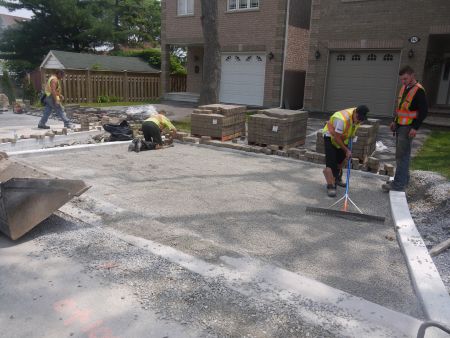Bedding layer
Revision as of 13:07, 22 September 2022 by SamanthaPelayo (talk | contribs)
The bedding layer consists of a coarse stone and provides a level medium onto which paved surfaces are installed. Note that bedding layers are required for permeable pavers but not porous concrete. Additionally, the bedding layer can function as the choker layer, depending on the design.
Construction Steps:
- Place stone bedding material on top of compacted reservoir course.
- Level aggregate to the appropriate depth, as per the design. A vibratory screed can be used to level the bedding material.
Key Inspection Points:
- Granular bedding material is correct size and material (e.g. 5 mm stone) upon arrival to site. For an example of a municipal standard for gradation and material size, refer to Toronto Standard 861.
- Bedding depth conforms to design and is uniform across the LID feature.
- When a 3-metre straightedge is placed on the surface of the bedding material, gaps between the straightedge and bedding surface are not greater than 10 mm at any point.
Mistakes to Avoid:
- Fines in the aggregate – ensure that the correct stone gradation is provided and the medium is free of fines and crushed stone. See Jar test to ensure there are no fines in the crushed stone aggregate.
- Compaction – the bedding layer cannot be compacted
- Use of plate vibrators – do not use plate vibrators for levelling, as they can crush the bedding material. Tamping should be performed after the installation of the pavers.
For more guidance on materials specifications, refer to aggregate, OPSS aggregates and OPSS PROV 1010 Aggregates - Base Subbase Select Subgrade, and Backfill Material Standard [1]
- ↑ OPSS PROV 1010 Aggregates - Base Subbase Select Subgrade, and Backfill Material Standard.
